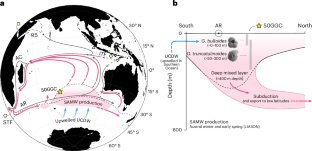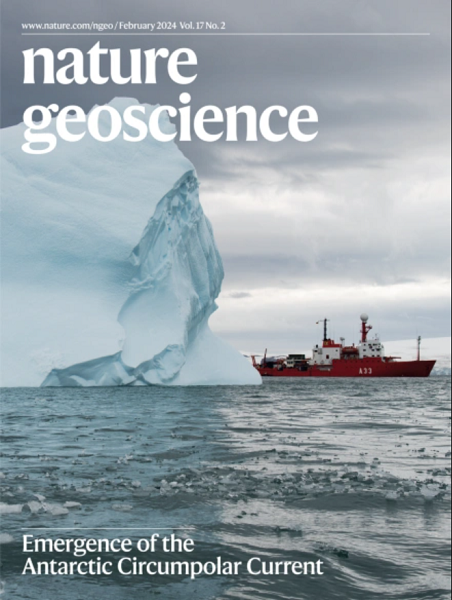Elevated shallow water salinity in the deglacial Indian Ocean was sourced from the deep
IF 16.1
1区 地球科学
Q1 GEOSCIENCES, MULTIDISCIPLINARY
引用次数: 0
Abstract
Along the northern rim of the Southern Ocean, the transformation of upwelled deep waters into less-dense Subantarctic Mode Waters forms a critical link between the deep and shallow layers of the global ocean. In the Indian sector, mode waters comprise a key component of Agulhas Leakage, which today conveys salt to the Atlantic basin necessary for sustaining deep water formation. The salinity of Indian-sourced mode waters may therefore represent an upstream influence on Atlantic overturning, with implications for global climate. Here we reconstructed the temperature and salinity of these waters across the Last Deglaciation using the geochemistry of two planktic foraminiferal species from a south Indian Ocean sediment core. Approximately 20,000 years ago (~20 ka), deglaciation was marked by an abrupt ~2–2.6 practical salinity unit increase that persisted until ~16 ka. This event coincided with an increase in water mass age reconstructed from the same core. We argue this coherence is evidence for an aged, salty glacial bottom water mass that, once upwelled, modified the salinity of Indian-sourced mode water. Model experiments suggest this salt had the potential, if leaked into the Atlantic, to nudge overturning towards its modern-day configuration, highlighting an underappreciated deep ocean influence on the deglacial dynamics. Increased salinity of Subantarctic Mode Water during the initial phase of the Last Deglaciation could have enhanced deep water formation in the North Atlantic, according to proxy records from a sediment core in the southern Indian Ocean.


去冰期印度洋浅水盐度的升高来源于深海
沿着南大洋的北部边缘,上升流的深水向密度较低的亚南极模态水域的转变形成了全球海洋深层和浅层之间的关键联系。在印度部分,模态水域构成了Agulhas渗漏的关键组成部分,今天它向大西洋盆地输送盐,这是维持深水形成所必需的。因此,印度模态水域的盐度可能代表了对大西洋倾覆的上游影响,对全球气候有影响。在这里,我们利用来自南印度洋沉积物岩心的两种浮游有孔虫的地球化学特征,重建了这些水域在末次冰期的温度和盐度。大约2万年前(~20 ka),冰川消融的标志是实际盐度单位突然增加~ 2-2.6,并持续到~16 ka。这一事件与从同一岩心重建的水团年龄的增加相吻合。我们认为,这种一致性是一个古老的、含盐的冰川底部水体的证据,一旦上涌,就会改变印度源模态水的盐度。模型实验表明,如果这种盐泄漏到大西洋,有可能推动倾覆,形成现在的形态,这突显了深海对冰川消融动力学的影响,而这种影响尚未得到充分认识。
本文章由计算机程序翻译,如有差异,请以英文原文为准。
求助全文
约1分钟内获得全文
求助全文
来源期刊

Nature Geoscience
地学-地球科学综合
CiteScore
26.70
自引率
1.60%
发文量
187
审稿时长
3.3 months
期刊介绍:
Nature Geoscience is a monthly interdisciplinary journal that gathers top-tier research spanning Earth Sciences and related fields.
The journal covers all geoscience disciplines, including fieldwork, modeling, and theoretical studies.
Topics include atmospheric science, biogeochemistry, climate science, geobiology, geochemistry, geoinformatics, remote sensing, geology, geomagnetism, paleomagnetism, geomorphology, geophysics, glaciology, hydrology, limnology, mineralogy, oceanography, paleontology, paleoclimatology, paleoceanography, petrology, planetary science, seismology, space physics, tectonics, and volcanology.
Nature Geoscience upholds its commitment to publishing significant, high-quality Earth Sciences research through fair, rapid, and rigorous peer review, overseen by a team of full-time professional editors.
 求助内容:
求助内容: 应助结果提醒方式:
应助结果提醒方式:


